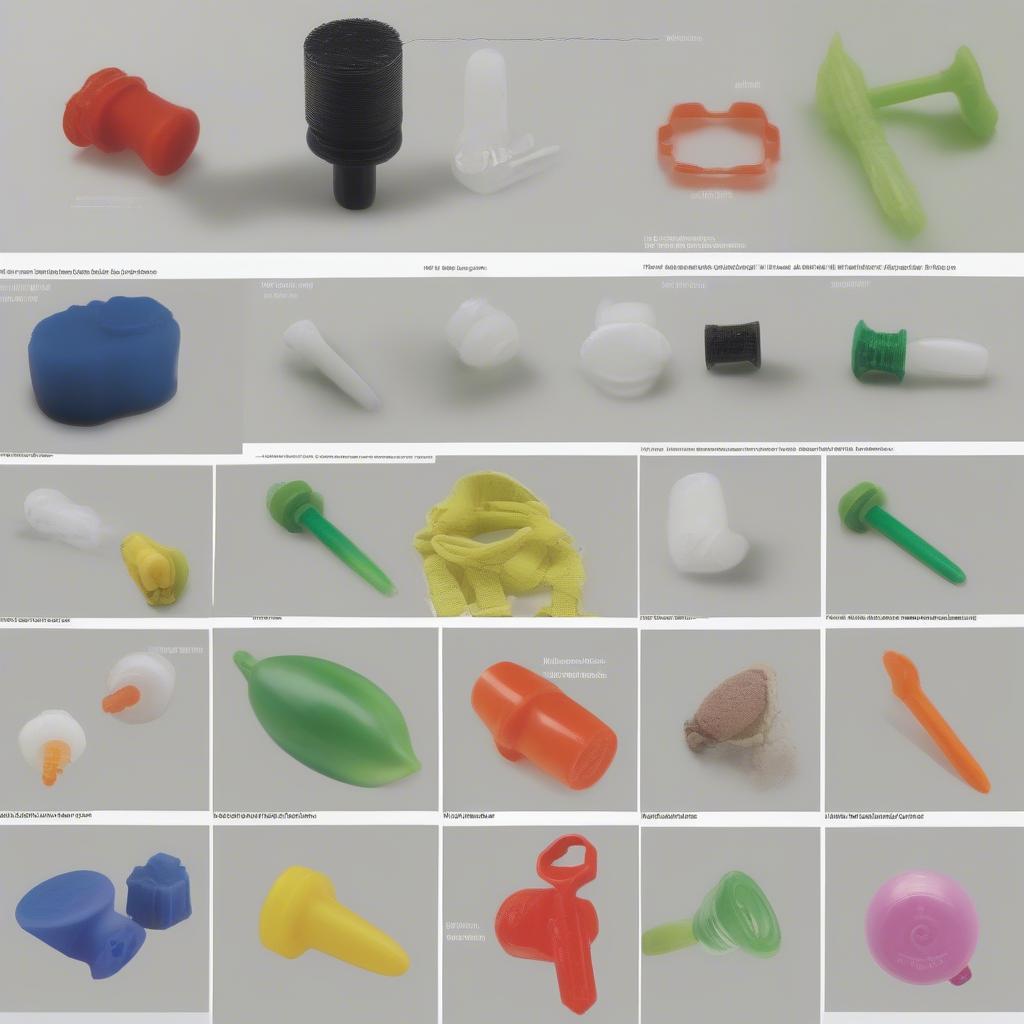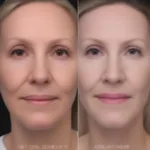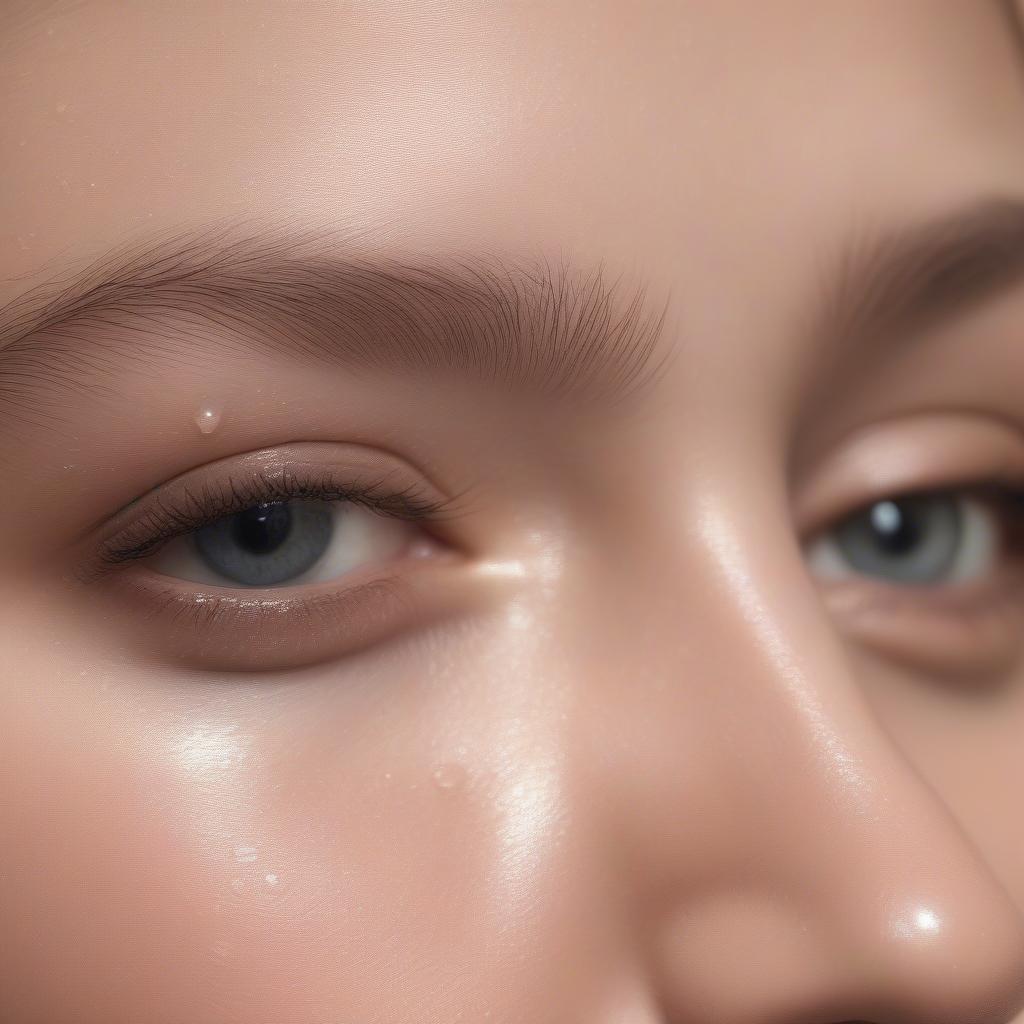
Dewy Skin vs. Oily Skin: Understanding the Difference and Finding the Right Routine
- AmazoniaSilva
- Tháng 12 11, 2024
- Zodiac signs
- 0 Comments
Dewy skin vs. oily skin – it’s a common point of confusion in the skincare world. While both can involve shine, they are fundamentally different, and require different approaches to care. Understanding your skin type is the first step towards achieving a healthy, radiant complexion.
What is Dewy Skin?
Dewy skin is characterized by a healthy, hydrated glow. It looks plump and smooth, reflecting light beautifully. This sought-after radiance is a sign of well-nourished skin with a balanced oil-water content. Think of a perfectly ripe grape – smooth, juicy, and reflecting the light. Dewy skin isn’t overly shiny, nor does it feel greasy. It’s simply healthy skin at its best.
 Example of dewy skin
Example of dewy skin
What is Oily Skin?
Oily skin, on the other hand, is characterized by excessive sebum production. This leads to a persistent shine, particularly in the T-zone (forehead, nose, and chin). Oily skin can feel greasy to the touch and is prone to enlarged pores, blackheads, and breakouts. Unlike the healthy sheen of dewy skin, oily skin often appears slick and can feel uncomfortable.
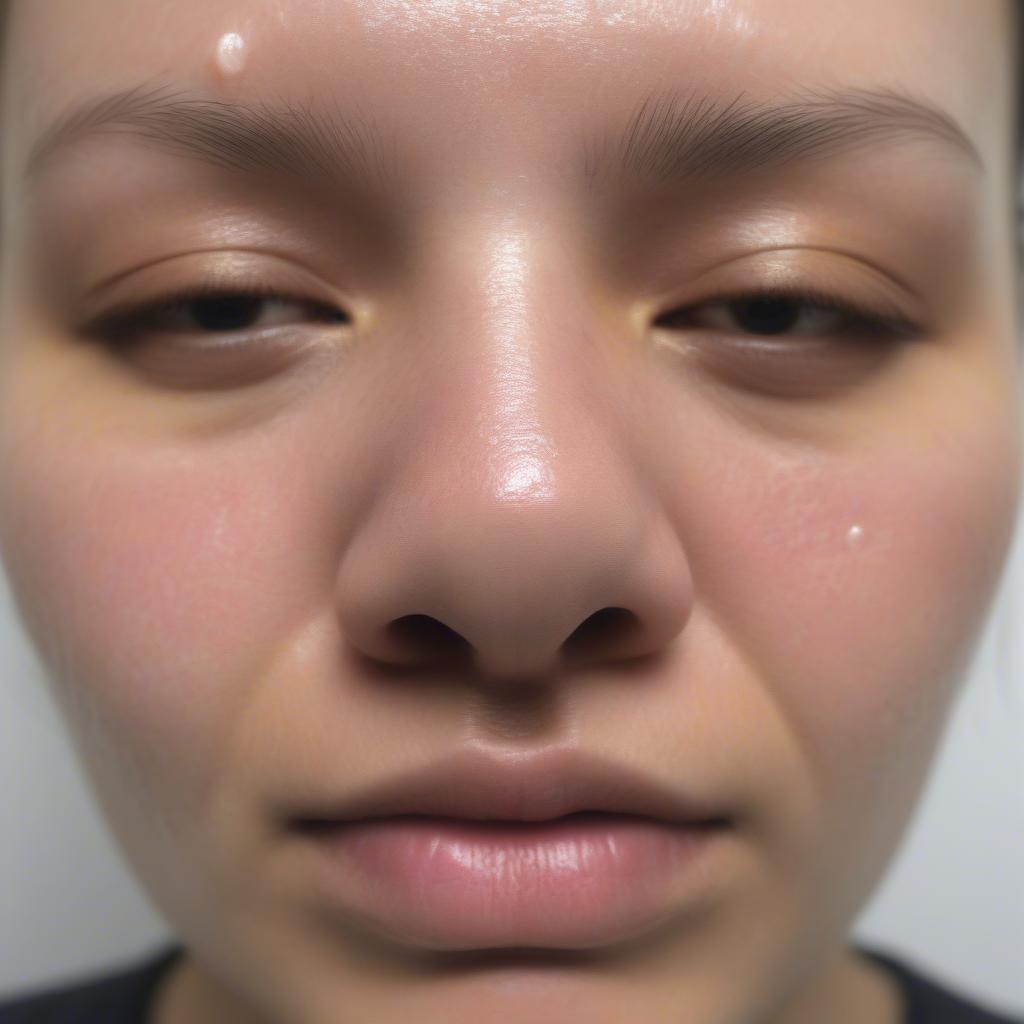 Example of oily skin
Example of oily skin
Dewy Skin vs. Oily Skin: Key Differences
The key difference between dewy and oily skin lies in the balance of oil and water. Dewy skin represents a harmonious equilibrium, while oily skin is tipped towards overproduction of sebum. Here’s a breakdown:
- Shine: Dewy skin has a subtle, healthy sheen. Oily skin has a persistent, often excessive shine.
- Texture: Dewy skin is smooth and plump. Oily skin can feel greasy and thick.
- Pores: Dewy skin typically has refined pores. Oily skin often has enlarged, visible pores.
- Blemishes: Dewy skin is generally less prone to blemishes. Oily skin is more susceptible to breakouts, blackheads, and whiteheads.
- Hydration: Dewy skin is well-hydrated. Oily skin can be dehydrated despite the excess oil.
Achieving Dewy Skin (Even with Oily Skin)
You might be wondering, can oily skin achieve the dewy look? Absolutely! The key is to manage oil production, not eliminate it entirely. Stripping your skin of its natural oils can actually trigger increased sebum production, leading to a vicious cycle.
- Cleanse gently: Use a gentle, non-foaming cleanser twice daily.
- Exfoliate regularly: Exfoliation removes dead skin cells and helps prevent clogged pores.
- Hydrate effectively: Even oily skin needs hydration. Choose a lightweight, oil-free moisturizer.
- Use a mattifying primer: A primer can help control shine and create a smooth base for makeup.
- Consider a hydrating serum: A hyaluronic acid serum can boost hydration without adding oil.
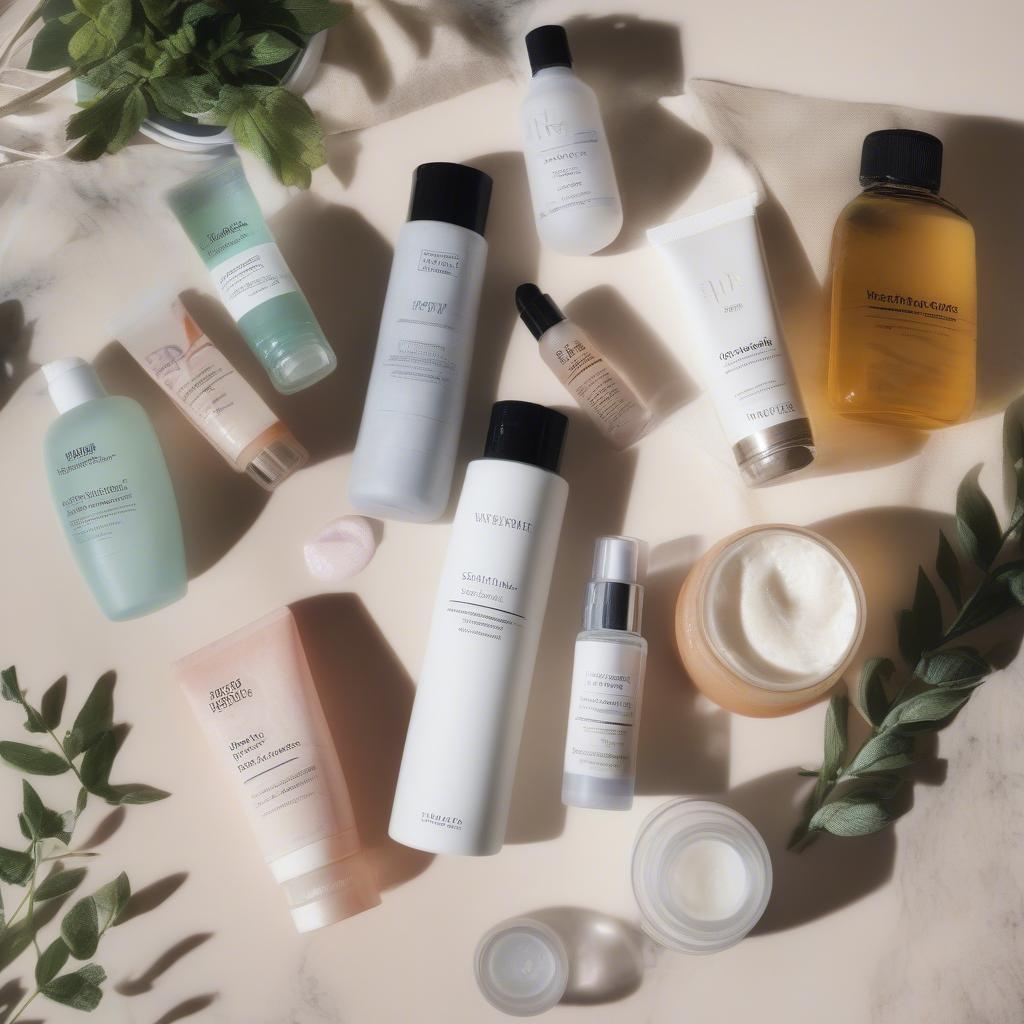 Skincare products for oily skin
Skincare products for oily skin
Expert Insights
Dr. Amelia Reed, a board-certified dermatologist, emphasizes the importance of proper hydration for all skin types, including oily skin. “Many people with oily skin mistakenly believe they don’t need moisturizer, but dehydration can actually exacerbate oil production. Finding the right lightweight, oil-free moisturizer is crucial.”
Esthetician Sarah Chen adds, “Regular exfoliation is essential for managing oily skin and promoting a healthier complexion. It helps remove excess oil and dead skin cells that can contribute to clogged pores and breakouts.”
Conclusion
Understanding the difference between dewy skin and oily skin is fundamental for developing a targeted skincare routine. While dewy skin is the hallmark of balanced hydration and oil production, oily skin requires a strategic approach to manage excess sebum. By focusing on gentle cleansing, regular exfoliation, and effective hydration, even those with oily skin can achieve a healthy, radiant glow. Remember, achieving dewy skin is about balance, not eliminating oil entirely.
FAQ
- Can I have both dewy and oily skin? No, these are distinct skin types. However, oily skin can be hydrated and look healthier, but it won’t be truly “dewy” in the same way as balanced skin.
- What causes oily skin? Genetics, hormonal fluctuations, diet, and environmental factors can contribute to oily skin.
- How often should I exfoliate? Start with 1-2 times a week and adjust based on your skin’s response.
- What ingredients should I look for in a moisturizer for oily skin? Look for lightweight, oil-free formulas containing ingredients like hyaluronic acid and glycerin.
- Can diet affect my skin’s oil production? Yes, a diet high in processed foods and sugar can exacerbate oil production.
- What is the best way to remove makeup from oily skin? Use an oil-free makeup remover followed by a gentle cleanser.
- How can I tell if my skin is dehydrated? Signs of dehydrated skin include tightness, dullness, and increased oil production.
Need More Help?
For personalized skincare advice and support, please contact us at [email protected] or visit our office at Fifth Avenue, 34th Floor, New York, NY 10118, USA. Our customer care team is available 24/7.
